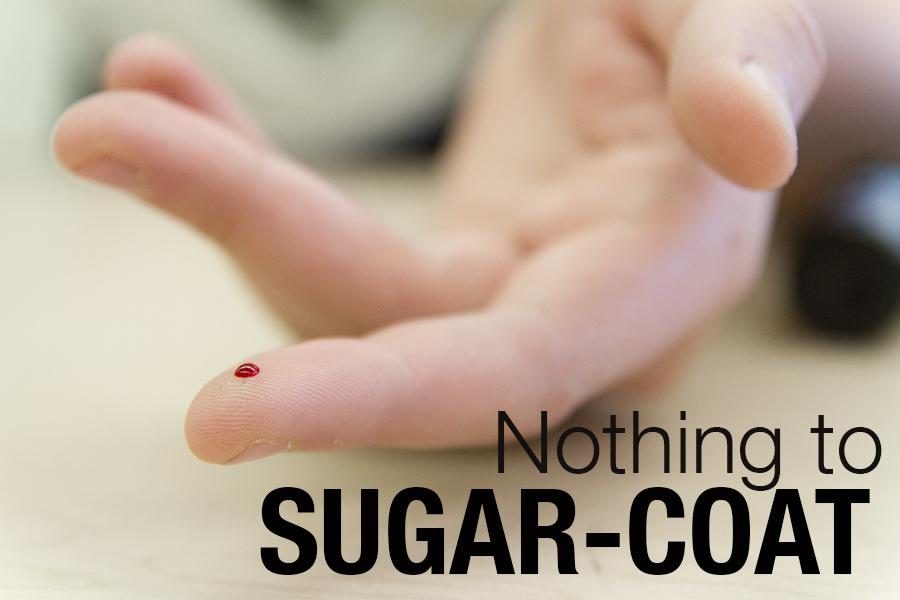National Diabetes Awareness Month
Sophomore describes coping with disease
Photo by Misty Morris
November 13, 2015
Ten finger pricks and six shots of insulin over the course of a day equals 3,650 finger pricks and 2,190 shots of insulin over the course of a year. These numbers don’t even include the countless low and high blood sugars that a diabetic has to manage almost everyday.
November is National Diabetes Awareness Month. For some, this month is filled with thoughts about Thanksgiving turkey and a week off of school, but for others, this month is one of the only times that they can bring their disease (ugh, I hate that word) into light.
Many of the things people say when they find out about my Type 1 diabetes goes along the lines of: “But you’re not fat!” “Can you eat that?” “Is that the good kind or the bad kind?” “I would die if I were you!” It honestly takes all of my strength to hold back my sarcastic comments such as: “That has nothing to do with it.” “Yes, I can eat whatever I want.” “I didn’t know there was a ‘good kind’ of diabetes.” “Well, thank goodness you’re not me, then.”
When most people think of diabetes, they think of some type of grandparent figure, wide as a house, who likes to eat Southern style cooking. While this may be the case for some (I don’t know, I’m not them), I do know that there are different types of diabetes. Type 1, the type I have, affects 5 percent of diabetics, while the other 95 percent of diabetics have Type 2 or gestational diabetes.
Type 1 diabetes means that the pancreas no longer produces insulin, a hormone that takes glucose from your bloodstream and distributes it to the cells in your body. The only way I can stay alive is by testing my blood sugar approximately 10 times a day and by taking insulin through my insulin pump, although some people take it in shot form.
No one knows the exact reason as to why people get it, but some believe that it is caused by genetics and environmental triggers, such as viruses. Type 1 diabetes is usually diagnosed in childhood, in my case when I was 10, and it will remain with me until a cure is found, which may not be in my lifetime.
I’m no expert on Type 2 or gestational diabetes, considering I don’t have them. However, I do know that Type 2 diabetes is usually caused by genetics and lifestyle choice, such as unhealthy eating or lack of exercise. Instead of someone’s cells taking the sugar from the bloodstream, the excess sugar builds up in the bloodstream. Gestational diabetes is caused by a woman’s pregnancy hormones essentially preventing insulin from doing its job.
The reason for November as National Diabetes Awareness Month is pretty simple: bring attention to the small percentage of the world that has any sort of diabetes. Many people don’t understand that diabetes is a life-threatening disease and there is no known cure for it. If more people knew about it and treated it as a dangerous disease, maybe the cure for it could be right around the corner.
















